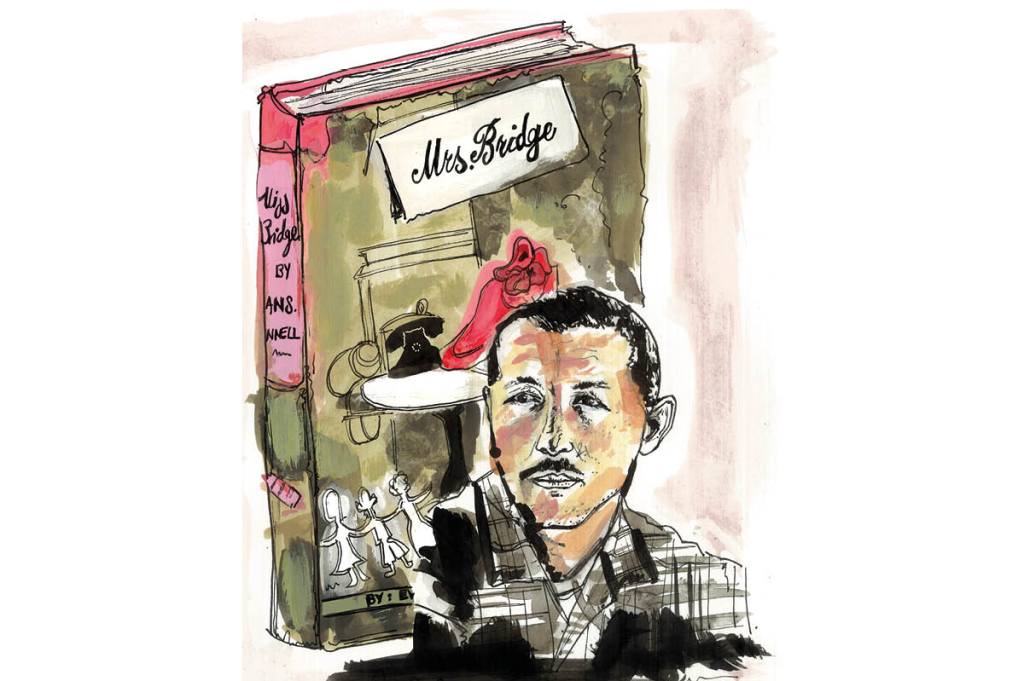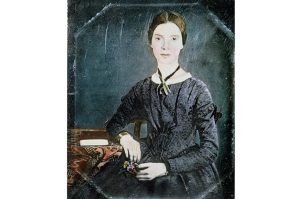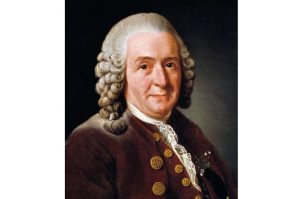When the journalist Steve Paul began his biography of the writer Evan S. Connell, a young librarian was helping him access research material. She happened across a photograph, and remarked, “What a suave-looking dude.”
Connell had movie-star good looks. Of his eight novels, two are now packaged as classics of American literature. This on top of a biography of Goya; a 2009 Man Booker International nomination for lifetime achievement; and a bestselling history of a battle in the Great Sioux War of 1876. Acolytes recommend his greatest book, Mrs. Bridge, with the confident smile that looks forward to welcoming another member to the exclusive band of Connellites. But in his centenary year, the suave-looking dude, whose work was admired by Dorothy Parker and filmed by Merchant Ivory, still seems to be scrabbling for a foothold on a lower plateau of Olympus.
Kansas City, Missouri, made two significant contributions to American culture in the mid-1920s. Robert Altman, the great filmmaker, was born there just six months after Evan Connell; both men came from the same well-to-do milieu (Altman’s father was an insurance salesman). Connell was expected to follow his father into the medical profession (and thank goodness he didn’t). He joined the US Navy in World War Two, but didn’t see combat; he studied in California and New York, then moved to Paris, where he began writing short stories for the Paris Review. Altman’s portraits of American society were to be panoramic; Connell’s painstaking miniatures.
One of Connell’s mistakes may have been to begin his career with a masterpiece. Mrs. Bridge, published in 1959, was his first novel. Mr. Bridge, an account of the same events from a different point of view, appeared a decade later, and doesn’t quite live up to the glories of that first book. By the 1990s a film adaptation, Mr. and Mrs. Bridge (with Joanne Newman and Paul Woodward), brought financial security. Connell lived simply in New Mexico and, despite an on- and-off relationship with the singer Gale Garnett, never married. One of his obituaries ends on a chilling hint of solitude: “found dead, 10 January 2013.”
What else? He loved chess. He patented a toy machine-gun that could be clipped onto children’s bicycles. But as Connell wrote of Goya, in what now seems a veiled self-portrait: “Certain artists are like the onion, beneath each membrane another. If you continue peeling in hopes of catching him you end up with nothing in your hand.” Paul’s biography struggled manfully with the onion-peeling.
Connell’s was a small and varied bibliography, encompassing poetry, short stories, fiction and biography, and his voice was defined by the kind of simplicity that bespeaks many hours’ sanding. There is none of the whizz-bang style of such writers as William Styron or John Updike. Though his books are deeply concerned with the topics that divided twentieth-century America (Harry S. Truman appears, thinly fictionalized, in Mr. Bridge), it was not his way directly to tackle, as Styron did, slavery or the Holocaust.
It may be that his sheer variety makes him hard to categorize and so presents readers with too protean a corpus. The domesticity of the Bridges is in polar contrast to his darkest work of fiction, 1966’s The Diary of a Rapist which clinically charts the internal workings of a violent mind. Connell wrote novels about the Crusades and about the alchemists of the sixteenth century; as if in testament to his elusiveness, these are counted on his Wikipedia page as nonfiction.
His claim to immortality is Mrs. Bridge, which astonishes in its build-up of quiet power. Like many books that are ostensibly about nothing at all, it is, of course, about everything. It portrays a woman’s life of marriage and motherhood in Kansas City in the years leading up to World War Two, while, beyond the safety of the picket fences, America makes its usual uproar. There is nothing in her life to reveal that Kansas City was, by the 1930s, a cultural hub of Jazz Age America. The Bridges are bored by music, ignorant of homosexuality and disapprove of Jews. Mrs. Bridge, Connell said, was based on his mother, and the first edition gives his name as Evan S. Connell Jr., as if conceding his filial status. The story, drafted in fifteen conventional chapters, he eventually rewrote, with confident economy, as 117 vignettes: a series of tiny snapshots that builds a profound pointilliste portrait of a woman’s interior life, or her attempts at one. This from a thirty-five-year-old man who had never before written a novel.
“Her first name,” the book opens, “was India — she was never able to get used to it. It seemed to her that her parents must have been thinking of someone else when they named her. Or were they hoping for another sort of daughter? As a child she was often on the point of inquiring, but time passed, and she never did.” Mrs. Bridge spends the entirety of this short novel on the point of doing a great many things. She means to read Dostoevsky; she wants to learn Spanish. She wonders whether she needs psychoanalysis and considers voting more liberally than her conservative husband. She does none of these things, sinking into something she is too respectable to call despair. Her life is devoted to her three children and to Mr. Bridge (a lawyer who spends his time at the office). It is a novel of such quietness that, when something does happen (the suicide of a neighbor, the holding-up at gunpoint of a cocktail party) its reverberations are all the more seismic. These rips in the fabric of life are conveyed in the most matter-of-fact sentences: “The next morning Lois Montgomery telephoned to say that Grace Barron had committed suicide.”
Connell’s topic, I think, is the nameless fear that, then as now, dwells behind the clapboard and hydrangeas of American middle-class society. He foreshadows Edward Albee’s play A Delicate Balance, in which a nameless and existential fear erupts into the middle of New England splendor, and a quivering couple drive through the darkness to their neighbors’ because, as they haltingly explain, “WE GOT… FRIGHTENED.” Albee’s play postdates Mrs. Bridge by six years, and is a reminder of the era of existential — which is to say nuclear — dread in which both men wrote. At one point a tornado nearly sweeps the Bridges away. But it is a mark of Connell’s skill that the scene is played entirely for humor.
Only once does the rigorously disciplined Connell permit himself an existential flourish. Sitting with her husband on a night of wind and rain, reading the newspaper and doing nothing much at all, Mrs. Bridge (never once referred to as India) sees the room illumined by lightning.
“Did the clock strike?” he asked.
“No, I don’t believe so,” she answered, waiting.
He cleared his throat. He adjusted his glasses. He continued reading.
She never forgot this moment when she had almost apprehended the very meaning of life, and of the stars and planets, yes, and the flight of the earth.
What a daring and vertiginous zoom-out from fireside to universe, the more radiant for appearing after that matte description of her husband, who sits so utterly earthbound. At a stroke it turns this novel of domestic realism into one of cosmic radiance. Were that “yes” to be missing the sentence would not be half as good. It is half orgasm, half certitude, and neither are experiences to which Mrs. Bridge is accustomed. (There is a touch of Molly Bloom, perhaps, from her yes-laden monologue in Ulysses.) But a world speaks in that “almost.” As the novel’s first sentence has told us, Mrs. Bridge is forever on the precipice of apprehension and cannot reach the summit.
Not much chance, perhaps, of such a writer making waves in a period that, as the Fifties slid into the Sixties, saw the debuts of Philip Roth, John Updike and Richard Yates. But Mrs. Bridge’s last name hints at Connell’s state-of-the-nation ambitions. Kan-as City, slap bang in the middle of America and known as the “crossroads of the world,” becomes a bridge (that great symbol of Americanness harnessed by Hart Crane and Arthur Miller) between the literary innovations that clustered on the country’s coasts, from Alexander Portnoy’s New Jersey to the Beat poets’ California sunshine. Mrs. Bridge was published two years after Jack Kerouac’s On the Road, that defining title of the Beat generation, and quietly points out that not everyone can jump into a car and live a life of jazz and poetry on the open highway. There is a great deal about cars in Connell’s work, but they move the characters no further than the country club or the grocery store. Mrs. Bridge ends with a car that becomes stuck in a snowdrift, quite literally off the road.
A year after Mrs. Bridge, Updike published the first of his Rabbit tetralogy, an explicit riposte to Kerouac that introduced a wide readership to his breathtaking style. But Connell’s writing, in all his novels, is the sort that pushes through the dazzle of style and makes for the clearer air above. Updike (like Styron and Roth) became infamous for his rococo accounts of sex, but in Connell’s writing sex exists in a world of devoted marital fidelity and shame-faced taboo. Mrs. Bridge finds a dirty magazine in her son’s bed. After much agonizing, she burns it in the incinerator, before silently handing him a “slim, musty pamphlet… like the crumbled wings of moths,” whose “elaborate typography [relates] a little story about the marriage of a sperm and an ovum.” It is one of his very few similes, which appear in his novels rarely, like wild orchids in a neatly mown lawn.
The suave-looking dude was a fine writer, too good, perhaps, to have written the Great American Novel. Chapter seventy-seven of Mrs. Bridge, “Beautiful Luggage,” is a single short paragraph about Mrs. Bridge’s purchase of “three elegant, darkly burnished leather suitcases.” They strike her as being of such beauty that she buys a set of ugly canvas covers to protect the leather, which are then never removed. Every so often she peeks beneath the canvas, “and there — as beautiful as though still on display — the leather gleamed. Well pleased, she buttoned on the cover.” Just that. But how much Connell reveals about his characters’ shrouded lives, devoted to the keeping-up of appearances.
Mrs. Bridge’s own life has a darkly burnished gleam at its center, too, a nurtured secret, of ambition and desire. But her inner life is dust-sheeted, kept for best, covered in ugly canvas and waiting for a trip she will never make. All that is left is the moth-wing residue of unlived lives. The novel’s epigraph is from Walt Whitman: “But where is what I started for so long ago? And why is it yet unfound?” Where Mrs. Bridge sought, never to find, Evan Connell achieved precisely what he set out to do.
This article was originally published in The Spectator’s May 2024 World edition.


















